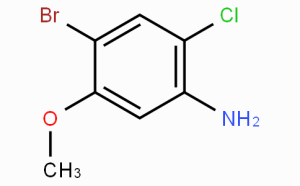When we go to the hairdresser to dye our hair, we have to be aware of the possible risks of retinopathy caused by dyes.
In this article, we will analyse precisely these risks and summarise what to pay close attention to.
An aesthetic problem, but not only
Dyeing one's hair, because it is turning white or simply because it pleases us to see ourselves with a different look, is a human behaviour that dates back to the dawn of time and has always been very common among women and in recent decades is becoming more and more common among men as well.
Not everyone may be aware that this cosmetic treatment may involve risks to the eyes. Let's make it clear right away that the risks depend on the type of dyes used.
Effects on the retina
Clinical study
A clinical study, just published in Jama Ophthalmology, Retinopathy Associated With Hair Dye | reports cases of retinopathy occurring in three middle-aged women following the use of hair dyes containing aromatic amines.
Aromatic amines
Aromatic amines are organic compounds characterised by the presence of an amine group (NH2) linked to an aromatic ring, such as benzene.
 They are important in various industrial contexts, especially in the production of dyes, drugs and plasticisers, but their exposure can lead to health risks such as cancer diseases and liver and kidney toxicity.
They are important in various industrial contexts, especially in the production of dyes, drugs and plasticisers, but their exposure can lead to health risks such as cancer diseases and liver and kidney toxicity.
The most important aromatic amines are benzidine, 4-aminobiphenyl, 2-naphthylamine and ortho-tolidine.
Retinopathy and hair dyeing
Retinopathy arising from the use of hair dyes containing aromatic amines manifests as a bilateral, multiple serous retinal detachment that mimics MEK (Mitogen-Activated Protein Kinases Kinase) inhibitor-associated retinopathy, a still poorly understood form of retinopathy in which the enzymes MEK1 and MEK2, or both, are involved.
Resolution times
Retinopathy from hair dye fortunately resolved within months after discontinuing the use of the dye responsible for the ocular reaction.
Clinical case
One of the clinical cases, presented in the study published in Jama Ophthalmology, concerned a 61-year-old woman with no clinical history who presented with blurred vision a few days after using a commercially available hair dye containing para-phenylenediamine.
Para-Phenylenediamine (PPD)
Para-Phenylenediamine (PPD) is a dye commonly used in permanent hair dyes for its ability to effectively colour and cover grey hair.
It is the third most commonly used ingredient in cosmetic products, after perfume essences and preservatives
It is, however, a substance that can induce contact dermatitis in people who use cosmetics containing para-phenylenediamine.
It is also a substance that can cause generalised allergic reactions in some people.
Effects on the retina
The patient from the previously mentioned study presented with bilateral multiple serous retinal detachment and diffuse neurosensory retinal thickening on OCT examination.
Autofluorescence of the fundus also showed an area of hypofluorescent serous retinal detachment.
Serous detachment of the retina
This form of retinopathy associated with the use of hair dyes is certainly a rare occurrence.
Retinal toxicity is most likely favoured by the presence of head skin lesions, which favour the systemic absorption of aromatic amines and may be the reason for the rarity of this abnormal reaction.
Resolution and follow-up
These cases of retinopathy, although symptomatically resolved, on long-term follow-up revealed persistent OCT abnormalities, hyperfluorescent retinal deposits four years after discontinuation of dye use, and a slow regression of neurosensory retinal thickening.
This thickening could be secondary to intermittent dysfunction of the retinal pigment epithelium, suggesting that persistent dye use responsible for retinopathy could cause long-term dysfunction of the epithelium itself.
Retinal pigment epithelium
The retinal pigment epithelium (EPR) is the layer of pigmented cells on the outside of the retina neurosensory nourishing retinal visual cells, and is stably attached to the underlying choroid and the overlying visual retinal cells, the photoreceptors.
Cones and rods
The photoreceptors of the eye are specialised nerve cells located on the retina and are responsible for converting light into electrical signals that the brain interprets as vision.
Photoreceptors are divided into cones e sticks.
I cones are responsible for daytime vision and the perception of different colours
I sticks are more sensitive to light and allow vision in low light conditions.
Risk of relapse
Retinopathy induced by the use of hair dye has a low risk of recurrence, but only if the use of dyes containing aromatic amines is discontinued.
Dyes that caused retinopathy must be replaced with dermatologically tested products that do not contain aromatic amines, in particular para-phenylenediamine.
The absence of relapses when using products free of aromatic amines reinforces the association between para-phenylenediamine and this type of retinopathy.
Recommendations
Although it is a rather rare manifestation, it is very important that it be diagnosed early.
Indeed, the rapid identification of such an abnormal reaction allows an immediate discontinuation of the use of the harmful dye with the ultimate goal of preventing permanent damage to the retinal pigment epithelium.
Other substances to avoid
 Hair dyes actually contain an endless list of chemical ingredients and potential allergens, and to feel safe, it is not enough to use those that say 'ammonia-free' on the label.
Hair dyes actually contain an endless list of chemical ingredients and potential allergens, and to feel safe, it is not enough to use those that say 'ammonia-free' on the label.
Products on the market may sometimes contain aggressive substances, which may lead to allergies or other reactions due to prolonged use of formulations containing them.
As with every product we buy (not only in pharmacies) or that is applied to us by hairdressers and beauticians, especially those we are not familiar with, the advice is always to read the labels on the packaging carefully.
As far as hair dyes are concerned, there are several substances it is best to stay away from. Let's see which ones:
- Ammonia: an extremely volatile substance with a pungent and unpleasant odour, which can be harmful to health in the event of prolonged exposure.
- Resorcinol: derived from benzene, a type 1 carcinogen, is irritating to the skin, eyes and respiratory system, can cause allergies and is also likely to interfere with the endocrine system. On top of all this, it is highly polluting and persistent in the environment.
- Mineral oils: contrary to what you might think, they are not nourishing at all but create a real film on the hair, making it appear shiny but actually preventing the passage of nutrients and moisturising substances. In the long run, they make the hair dull and lacking in tone. In addition to their occlusive effect on the hair, they are often the cause of allergic reactions and irritation.
- Alcohol: this substance attacks the scalp making the hair brittle and frizzy;
- Chemical pigments: if present in high numbers and concentrations, due to their allergenic power, they can cause itching and discomfort during the application time or actual skin reactions.
On the subject of rare retinopathies see also:
X-linked retinopathies - Oculista Italiano
Risk of NAION and Semaglutide - Oculist Italiano
- Chirpaz N, Bricout M, Elbany S, et al. Retinopathy Associated With Hair Dye. JAMA Ophthalmol. Published online September 12, 2024. doi:10.1001/jamaophthalmol.2024.3453
- Faure C, Salamé N, Cahuzac A, Mauget-Faÿsse M, Scemama C. Hair dye-induced retinopathy mimicking MEK-inhibitor retinopathy. Retin Cases Brief Rep. 2022;16(3):329-332. doi:10.1097/ICB.0000000000000969
- Chong HP, Reena K, Ng KY, Koh RY, Ng CH, Chye SM. Para-phenylenediamine containing hair dye: an overview of mutagenicity, carcinogenicity and toxicity. J Environ Anal Toxicol. 2016;6. doi:10.4172/2161-0525.1000403
